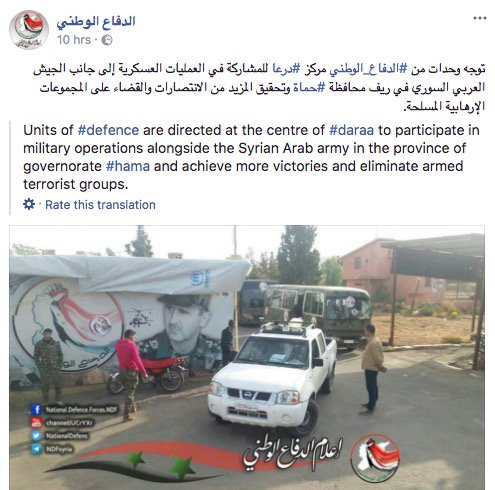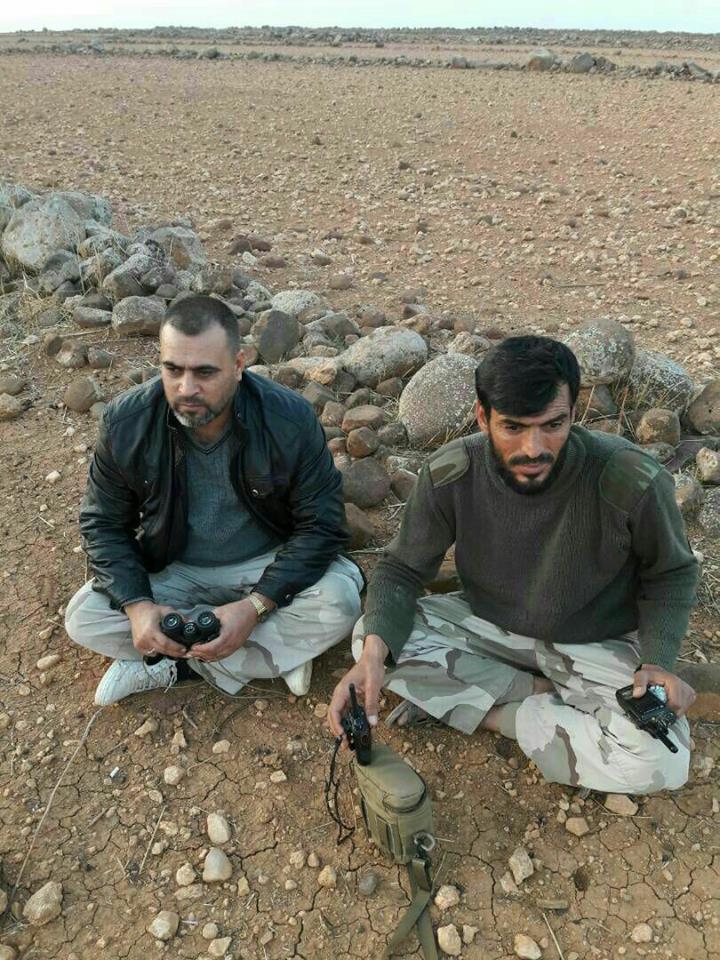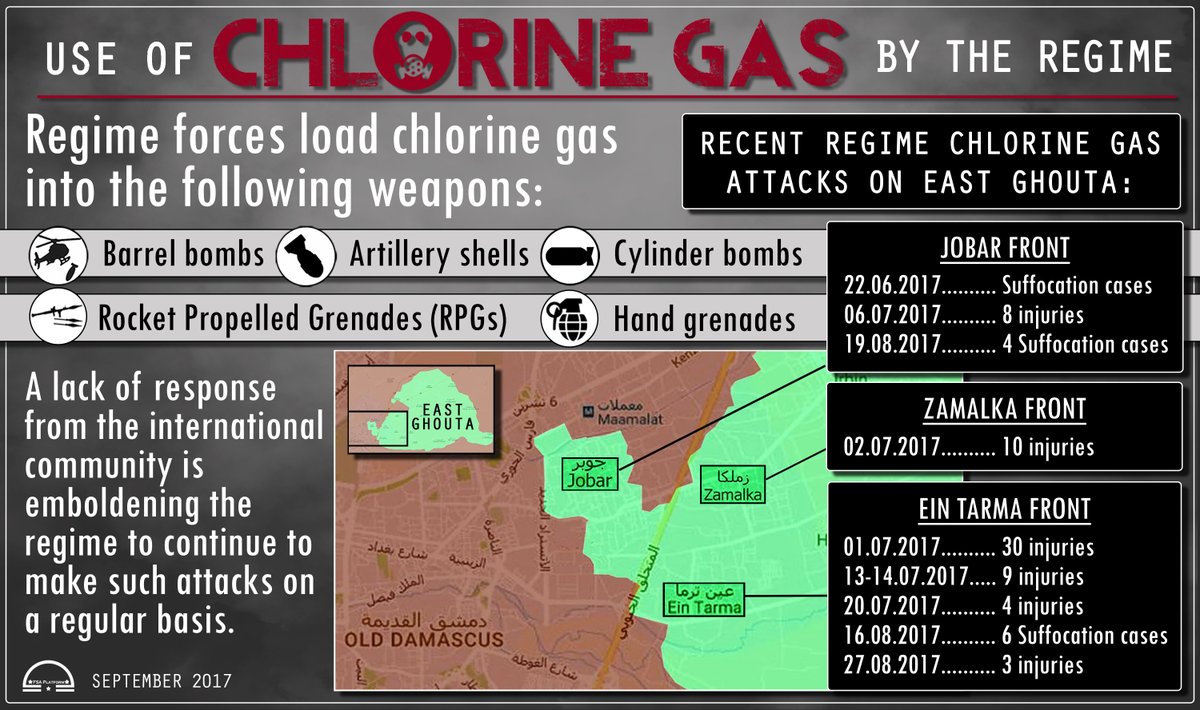
Saturday 11 November 2017
Friday 10 November 2017
The Syrian photographer who showed the world a war
'Karam al-Masri never planned on becoming a journalist. In 2011, Aleppo native was a second-year law student when protests began in Syria, following revolutions in Egypt and Tunisia. Using his cellphone, he captured photo and video of demonstrations against the Bashar al-Assad regime.
In April 2011, the Syrian government arrested al-Masri for posts he made on Facebook. Detained for one month, he stayed in solitary confinement and underwent torture. “The regime wanted me to say I was working for foreign agents,” al-Masri explained.
Then, in November 2013, members of the Islamic State kidnapped and incarcerated al-Masri simply because he was a photographer documenting what was happening in Aleppo, a major sin, according to ISIS. Again, he found himself in solitary confinement, surviving on a ration of half a slice of bread and three olives. When he was released six months later, not only did he find Aleppo leveled, but discovered his home had been hit by a barrel bomb, killing his mother. Weeks later, another bomb killed his aunt. Later, Syrian snipers shot him —twice— in the leg and hand.
Yet al-Masri doggedly resumed taking photographs, even more determined to show the world the atrocities experienced by Aleppo, particularly as foreign media fled in the midst of ISIS kidnappings and growing violence.
"At first, I started to take videos for my channel on YouTube. My videos were just of demonstrations, there was no fighting or anything like that. I wanted the world to see what was going on on the ground because there were no foreign journalists. The mainstream media would say, 'There’s nothing happening; Syria is fine; nobody is going to demonstrations.'
The war became a real war, not demonstrations or a revolution. The regime started to shell people with barrel bombs and missiles. It became very difficult to cover. But I wanted my work to reach everywhere in the world. Without these pictures and videos, maybe the regime would kill everyone in the areas out of [al-Assad’s] control." '
Thursday 9 November 2017
So nobody says, he or she didn't know

Julian Röpcke:
"Assad's militias publicly announce deployment from Daraa to Hama ...to kick off the final offensive to capture the northern "De-Escalation Zone" & displace 2 million civilians to Turkey and the EU."
"Reports that Hezbollah are retreating their active forces in Syria back to Lebanon. This Hezbollah retreat froze all east Hama fronts and all regime ops stopped due to shortage of men."
[https://twitter.com/AlqalaamENG/status/928713491049078784]
FSA Army of Glory Commander - Anyone who doesn't realise the régime's eventual goal is to capture all the liberated areas is delusional
"Jamel al-Saleh says they have liberated four villages and four hills, and repelled many régime attempts to advance.
He says between destroyed and captured vehicles, the régime has lost 25 vehicles. And in the past week, the régime has had 200 KIA in the NE Hama battles, and there are also captured régime fighters.
He says the régime's eventual goal is to capture all the liberated areas. Anyone who doesn't realise this is delusional. He says the régime won't stop at any specific town or location. The régime uses the fake ceasefire agreements, which some factions have agreed to, as a way to concentrate on one area at a time.
He says the Astana process has failed to release a single political prisoner, and hasn't been able to relieve the siege of the besieged areas. The régime continues to attempt to advance and shell areas of Hama, N.Homs, Ghouta, Daraa, etc. The negotiations are a lie.
He says the responsibility for the blood being spilled throughout the liberated areas is on the factions that went to Astana, and are sitting and doing politics and not fighting. There purpose should be to fight the régime militarily.
He says they will continue to fight the régime as long as they have the ability to do so or until the régime is defeated."

Regime Airforce Escalates Its Air Raids On Eastern Ghouta, And Shells Harasta With Napalm

'The Revolutionary Forces of Syria Media Office confirmed that 13 air strikes hit the towns and villages of Eastern Ghouta, including raids carried out using napalm rockets which specifically shelled the neighborhood of Harasta. The towns of Saqba, Kafar Batna and the Jobar neighborhood were also subjected to similar shelling. This escalation comes during the time in which the Russian Ministry of Defense announced that it has reached an agreement to reduce military escalation in the vicinity of Damascus.
Sources from Faylaq Al-Rahman and Jaish Al-Islam confirmed to RFS that they were unaware of the agreement, and that what is happening on the ground in Eastern Ghouta contradicts what Russia and its media are claiming.
Six civilians, including two children and two women were killed in the city of Saqba yesterday, while another child was killed in the city of Douma, as a result of heavy artillery shelling carried out by the regime.'

Tuesday 7 November 2017
In the Name of 'the Party': PYD Reproducing Baathist Oppression
'As a term, “the party” formerly denoted the Baath Party. But today there are two parties, both largely based on geography: The Baath Party and the Democratic Union Party (PYD). Both these parties govern and administer and depend on strong intelligence agencies, which, of course, are also used to pursue their aims and intentions, which overlap and which they sometimes share.
The PYD has been able to benefit from the military confrontations occurring on Syrian territory and take control of some important sections of it, whether through military clashes with Free Syrian Army units, or through agreements with the regime, and, recently, in battles it joined to expel the Islamic State (ISIS) from the provinces of Raqqa and Deir-ez-Zor, with clear American support. The United States found in them a trained proxy ground force with high military discipline, after failing to form a force from Arab FSA groups to fight exclusively against ISIS.
With the beginning of 2016, the year in which the opposition took a heavy military and political blow, the PYD has been able to expand its control outside the city of Afrin to include about 15 Arab villages in the northern countryside, expelling most of their residents.
In Aleppo city, the PYD, in coordination with regime forces, has been able to take control of four new districts, Bustan al-Basha, Al-Halak, Baeedeen and Al-Haydairiya, in addition to previously controlling Sheikh Maqsoud and part of Ashrafieh.
The PYD has imposed a frightening security force around Afrin through a system of monitoring and inspection at its entrances from the northern countryside at the Atmeh crossing, and from the western countryside at the Ghazawiya crossing.
In the villages which the PYD has taken, Arab residents who remained in their villages are particularly suffering, especially as they are forbidden from traveling to the liberated areas. Most of them cannot see their families or relatives, even on holidays. Residents are given one very “democratic” choice: either remain or travel without returning. Meanwhile, there is no problem with them traveling to regime-held areas.
The PYD has also imposed its own Kurdish curriculum on school students, bringing in a number of unqualified teachers for a short course around their new program in the Kurdish language. Residents have rejected the “party curriculum,” protesting by forbidding their children from attending schools, with the position of the “democratic” administration as expected: either accept the curriculum, or the schools will close.'
Sunday 5 November 2017
FSA Breaks Siege of Beit Jinn but Later Retreats as Israeli Forces Intervene on Assad Militias’ Side
The FSA’s Mount Hermon operations room said that the offensive came in response to the fierce campaign being launched by the Assad regime forces and their allied foreign militias in the farmlands surrounding of the town of Beit Jinn and the nearby villages. Regime forces have been shelling the area and residential neighborhoods in attempts to make gains on the round.
The FSA groups announced they would continue military action against Assad forces until the siege imposed on the area is lifted and detainees are released. They called on other FSA groups to join them and to ignore international pressure being put on these groups.
Activists in rural Quneitra said that the Israeli occupation forces targeted the reinforcements the Free Syrian Army groups sent to the border strip of land in southwestern Syria. They pointed out that the bombing came in response to calls for help by pro-Assad militias in the town of Hadar to relieve them of the FSA army attack. The Israeli occupation forces opened the border and supplied the pro-Assad militias in Hadar with arms and ammunition, thus enabling regime forces to regain control of the areas they lost to the FSA fighters.
Assad regime forces and the Hezbollah militia have laid siege on villages and towns of the western Rural Damascus for around 10 months. The besieged area has been subjected to violent shelling by barrel bombs and rockets amid daily attempts by regime forces to advance on the area.'
Subscribe to:
Posts (Atom)
